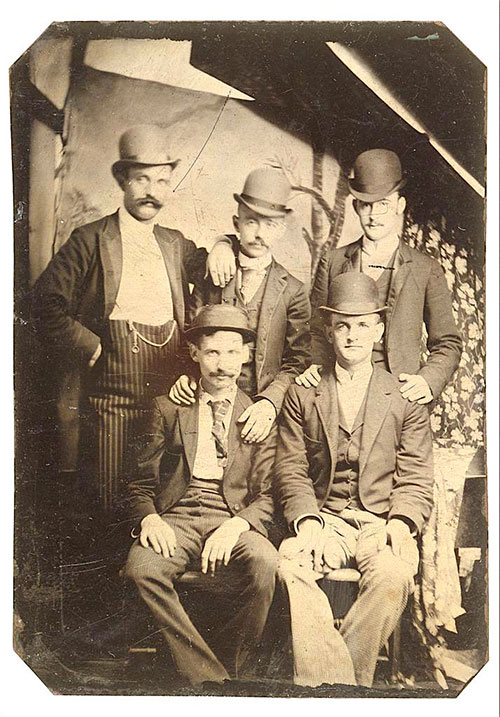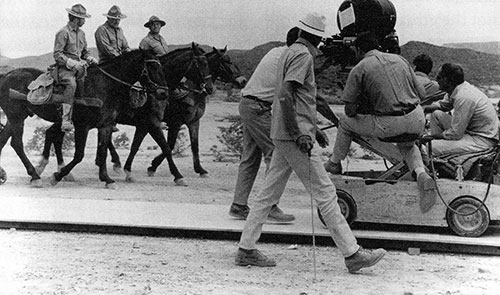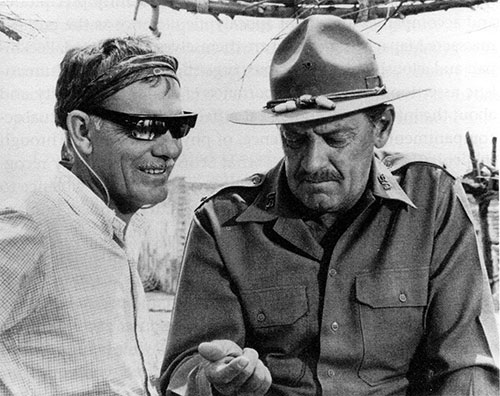

By Matt Cutugno
Indio, CA, USA

Matt Cutugno
Some of the earliest memories in my life were watching Westerns with my father. He was a fan, and if he wasn't settled into his easy chair after dinner watching Gunsmoke on TV, he would take me out to the movies and we would see films like The Man Who Shot Liberty Valance.
The genre of Westerns was immensely popular back then, big business, and the tales told were straightforward and uplifting. There were good guys versus bad guys, sheriffs and outlaws, and the cliché that the former wore white and the later wore black was the truth. The law was earnest and honest, love was pure and true, and a man's word was his bond. That was until the 1960s. The times they were "a changin'," the world became smaller, and our modern society's challenges became more complicated.
Westerns changed too. A sub-genre was introduced, and it couldn't help but reflect the times. There was the war in Vietnam, issues of civil rights for women and minorities, and concern over our endangered environment. Thus went the public discussion, and shades of gray transformed the black-and-white world of the 1950s.
The revisionist or anti-Western was born. Just as popular music was revolutionized, slowly but surely, so were the good and the bad guys of Gunsmoke. The first Western I saw that epitomized the new trend was in 1969 when I settled into my seat at a movie theater in Jersey and saw The Wild Bunch. As we said back in the day, that flick blew my mind.

Kid Curry, Bill McCarty, Bill (Tod) Carver,
Ben Kilpatrick, and Tom O'Day. (circa 1900)
The Wild Bunch, directed by Sam Peckinpah, concerns a group of aging yet tough mercenaries led by William Holden and Ernest Borgnine. The time is 1913, the end of the Old West, and the veteran gang is destined for one last gunfight in Mexico.
From the first scenes in the movie, viewers witness the anti-Western in display. Visually, we see the dry land and the hot and harsh climate, where sagebrush, cacti, and scorpions abound. The vibe announces there is going to be widespread violence, cynicism, and a harsh portrayal of the times and the men. Viewers are not disappointed in what enfolds.
We all remember how violence was portrayed in the traditional Western, the ones my dad watched. John Wayne fired his six-shooter (he seldom missed). His villainous opponent would clutch his stomach in agony (though no blood was visible). He'd drop his gun and fall into the dust or from a balcony onto a saloon floor. Same with fisticuffs: no matter how many punches were thrown or how many windows men were thrown through, blood and bruises were kept to a minimum.
In the anti-western, The Wild Bunch rides into town bent on robbing a bank. What they don't know is that bounty hunters lie in wait. It's an ambush and when shots are fired, men are hit and blood spurts into the air onscreen. Gang members, bounty hunters, and civilians alike are killed in graphic style, as bodies pirouette upon being struck by lead and twitch artistically in their dying.
Given all this, we shouldn't expect a happy ending and we don't get one. Instead, the final, bloody shootout serves as a template for coming generations of Western films.

Wild Bunch, opening scene

Wild Bunch, Peckinpah & Holden
Link:
Matt Cutugno's Profile at Stay Thirsty Publishing






